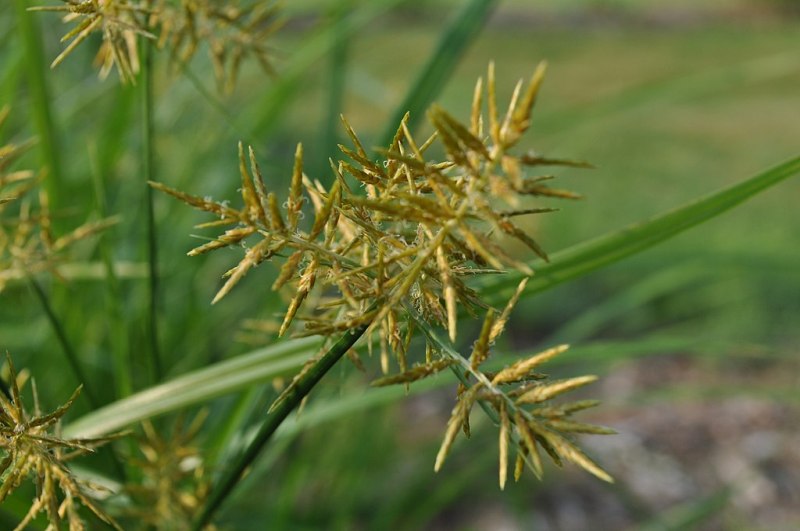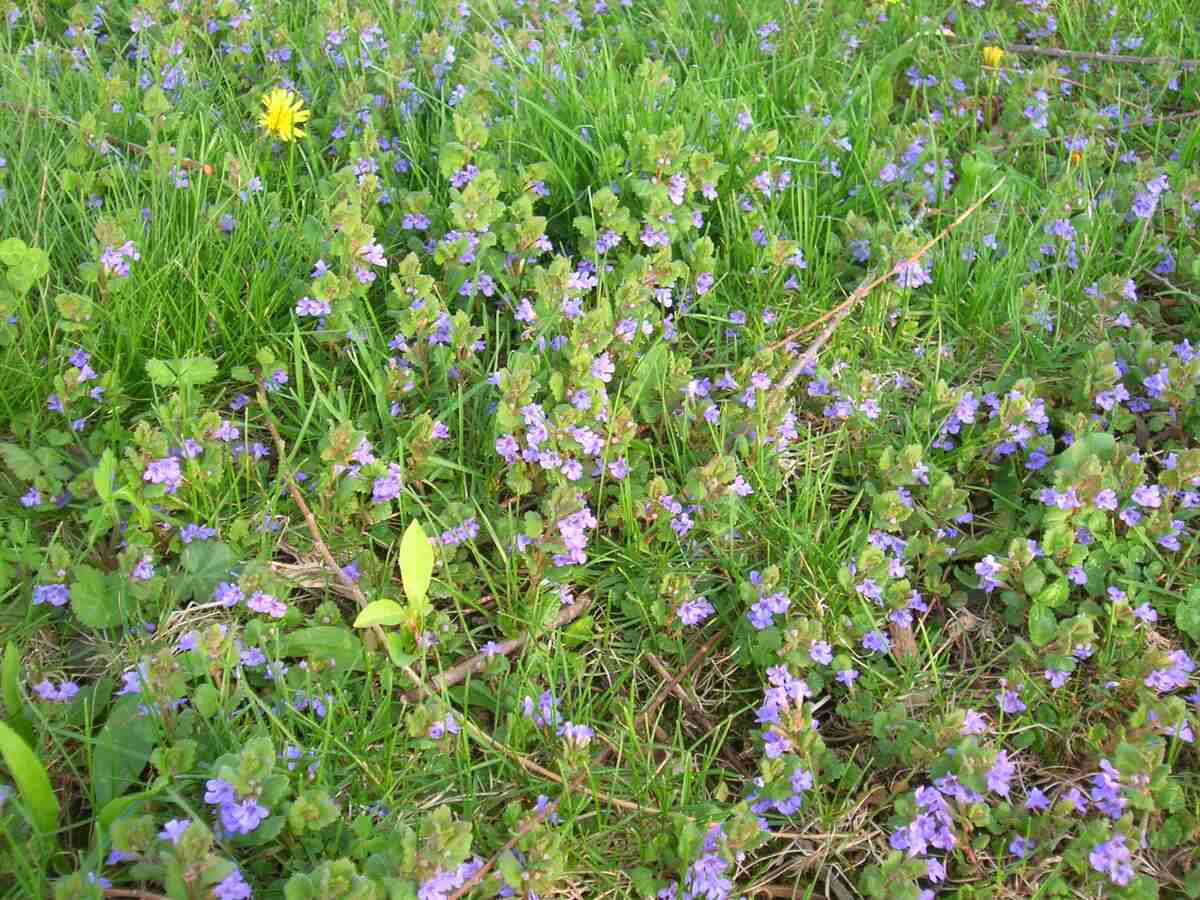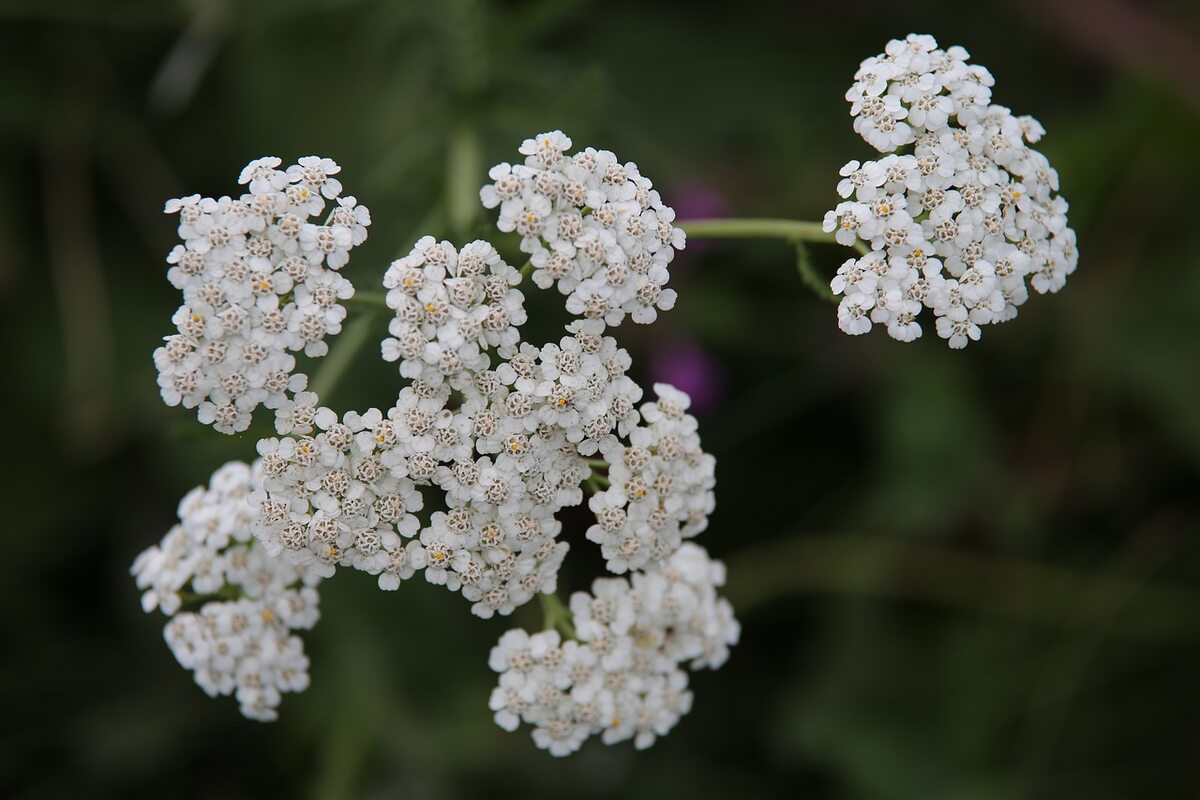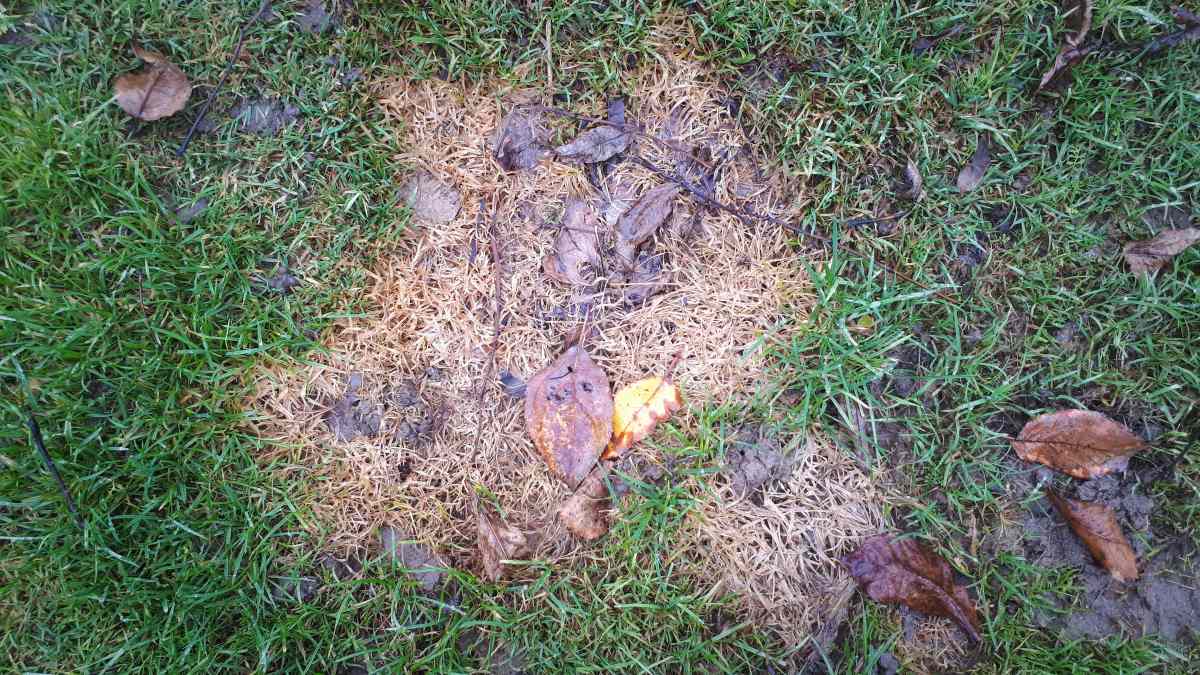
Weeds — the most unwelcome members of the plant kingdom. You cut, poison, and dig them out of your New York yard and garden to make way for other plants. But how do you know if something’s a weed? And if it is, how do you get rid of it? Our guide to the 15 most common weeds in New York can help you identify and control them.
- What is a Weed?
- Types of Weeds
- Common New York Broadleaf Weeds
- Dandelion (Taraxacum officinale)
- Poison Ivy (Toxicodendron radicans)
- Common Ragweed (Ambrosia artemisiifolia)
- Ground-Ivy (Glechoma hederacea)
- Stinging Nettle (Urtica dioica)
- Yellow Woodsorrel (Oxalis stricta)
- Common Chickweed (Stellaria media (L.) Vill.)
- Japanese Knotweed (Polygonum cuspidatum)
- Purslane (Portulaca oleracea)
- Field Bindweed (Convolvulus arvensis L.)
- Common New York Grassy Weeds
- FAQ
What is a Weed?
A weed is any plant that grows where it isn’t wanted. Some weeds have characteristics we all dislike (think ragweed and poison ivy). But even wanted plants can quickly become unwanted if they aggressively spread through your lawn or garden (think chive or mint). Some characteristics of weeds are:
- They grow quickly.
- They can harm animals and people through contact or ingestion.
- They compete with wanted plants for nutrients, sunlight, and water.
- They harbor insects or diseases.
Types of Weeds
Weeds are classified by their looks or their life cycle:
Appearance
Broadleaf. Most of these lawn and garden weeds have wide leaves with netlike veins. Broadleaf weeds typically have tap roots, (think dandelions), or fibrous roots, (think lambsquarters and pigweed).
Grasses. Also called monocots. Weed identification is tough with grasses. Early on, they look like part of your lawn, making them hard to find. They have fibrous root systems, may grow in bunches, or may produce flowers.
Life Cycle
Annual. These weeds grow, flower, and go to seed within a year or so. Temperature, light, and moisture trigger germination.
Biennials. These complete their growth over two years. They germinate the first year; flower, set seed, and die the second.
Perennials. These weeds grow for many years. Some spread by seed, and others use an extensive root system. Weed control can be difficult with perennials.
Here’s a look at 15 common weeds you may find in your New York lawn or garden:
Common New York Broadleaf Weeds
Dandelion (Taraxacum officinale)

Want to avoid dandelions? Move to Antarctica, the one place they aren’t found. These hardy plants grow just about anywhere and reproduce when wind (or your mower) blasts those puffball seed heads across the lawn. If you want to get rid of dandelions by digging, dig deep. Any bit of taproot left behind will bring up a new crop.
Note: Did you know that dandelions have health benefits? Yes, you can eat dandelions! The greens are a great source of vitamins and minerals and can be made into items ranging from fritters to wines. However, be sure that you pick dandelions from an area that has not been treated with herbicides, fertilizers, or pesticides.
Life cycle: Perennial
Weed type: Broadleaf
Where it thrives: Moist soil and sunlight
How to identify dandelions: A single yellow flower and jagged leaves. At maturity, the flower becomes a white puffball seed head.
How to get rid of dandelions: Use a pre-emergent or post-emergent herbicide. Alternatively, dig them up, snip or pinch off flowers (to prevent seed development), or heavily mulch the leaves.
Poison Ivy (Toxicodendron radicans)

Poison ivy can be hard to identify. It can be a shrub, vine, or ground cover with different leaf shapes and colors. It propagates through seeds or through stems that root on trees or soil. If you’re not immune, the oils in poison ivy can produce a severe, blistering, itchy rash on your skin, and contact dermatitis on your pet’s.
Life cycle: Perennial
Weed type: Broadleaf
Where it thrives: Prefers sun and moist soil.
How to identify poison ivy: Usually identified by its “leaves of three” — alternate leaves consisting of three leaflets. The egg-shaped leaflets may or may not be glossy or smooth, and range from lime to hunter green.
How to get rid of poison ivy: Post-emergent herbicides with glyphosate or triclopyr can get rid of poison ivy. Alternatively, hand pull, or cut young growth frequently. Wear protective clothing. Do not burn: Smoke from poison ivy can cause breathing problems for some people.
Common Ragweed (Ambrosia artemisiifolia)

For hay fever sufferers, ragweed is the culprit that makes for a miserable fall. Plants produce up to a billion pollen grains that travel hundreds of miles, making them hard to dodge. Ragweed has its uses: its seeds provide winter food for wildlife. However, it is aggressive, and its seeds can be viable for years, so it is difficult to control.
Life cycle: Summer annual
Weed type: Broadleaf
Where it thrives: Grows in any soil, but prefers full sun and slightly dry conditions.
How to identify common ragweed: Grows up to 3 feet tall, with green to purple stems and produces long, greenish-yellow flower spikes.
How to get rid of common ragweed: Use pre- or post-emergent herbicides. Mowing before the plant sprouts flowers is another method of control.
Ground-Ivy (Glechoma hederacea)

Ground-ivy, a member of the mint family, aggressively creeps along the soil, forming a thick mat that crowds out your grass. (Hence its other common name, creeping Charlie.) It mostly reproduces through its creeping stems, which root in the soil. Ground-ivy attracts bees who try their luck at getting nectar, as the flowers produce varying amounts.
Life cycle: Perennial
Weed type: Broadleaf
Where it thrives: Prefers shade and moist soils
How to identify ground ivy: This sprawling plant has heart-shaped leaves with scalloped edges and lavender flowers.
How to get rid of ground ivy: A post-emergent herbicide with triclopyr will kill established plants; pre-emergents have little effect on seeds left in the soil. Pulling it by hand or using a sod cutter will bring success. Cutting back on shade and correcting drainage issues may discourage creeping Charlie’s growth.
Stinging Nettle (Urtica dioica)

Stinging nettle wants to be left alone. Touch it, and tiny, hollow hairs on the stem and leaves will shoot a mix of chemicals into your skin (or your pet’s). The result: pain, redness, swelling, and itching that lasts for hours. Stinging nettle reproduces mostly through a large underground network of stems, making it a difficult — and tricky — weed to control.
Life cycle: Perennial
Weed type: Broadleaf
Where it thrives: Prefers shade in hot areas, but will grow in sun and damp, nutrient-rich soil.
How to identify stinging nettle: Grows 6 to 8 feet tall, with thin, green-toothed leaves. It produces clusters of tiny, light green or tan flowers.
How to get rid of stinging nettle: Herbicides are one option, however, some effective products are for professional use only. Other options include digging or pulling plants (Use leather gloves; the hairs can penetrate cloth.) Frequent mowing of stinging nettles can thin the plants.
Yellow Woodsorrel (Oxalis stricta)

Yellow woodsorrel (also called oxalis) may be a sign of drainage issues. Woodsorrel is aggressive and can pop up anywhere, partly due to its seed pods, which explode when dried. Oxalis plants contain soluble oxalate, which, according to the Pet Poison Helpline, can be toxic to dogs and cats if eaten in large quantities.
Life cycle: Perennial
Weed type: Broadleaf
Where it thrives: Prefers full sun and moist soil.
How to identify yellow woodsorrel: This weed can be mistaken for red or white clover or a shamrock, though it has three heart-shaped leaves (learn more differences in our article Clover vs. Oxalis). It produces small yellow flowers with five petals.
How to get rid of yellow woodsorrel: Herbicides containing glyphosate are best for spot treatment before the young plants flower. Mulching garden beds will help prevent seed germination.
Common Chickweed (Stellaria media (L.) Vill.)

Common chickweed is one of the first spring weeds to pop up on your lawn. It can create foot-long shoots that crowd out your grass. Chickweed flowers all year long, and a plant can produce up to 15,000 seeds. Pulling may get rid of the plant but not the seeds — Chickweed produces flowers and mature seeds simultaneously.
Life cycle: Cool season annual
Weed type: Broadleaf
Where it thrives: Full sun or partial shade; moist soil
How to identify common chickweed: Can grow to 4 inches tall. Bright green leaves with pointed tips, and small white flowers with five deeply divided petals.
How to get rid of common chickweed: Herbicides containing glyphosate or triclopyr can be effective. You can hand pull or dig, but be sure to get all the root; otherwise, it will come back. (And don’t throw it in your compost pile.)
Japanese Knotweed (Polygonum cuspidatum)

Japanese Knotweed has its uses; it attracts bees and stabilizes soil. However, this invasive plant can invade and overrun gardens and yards, crowding out other plants. This aggressive and persistent plant is considered a prohibited invasive species in New York and is not allowed to be sold or brought into the state.
Life cycle: Perennial
Weed type: Broadleaf
Where it thrives: Full sun, though can tolerate shade. Moist soil.
How to identify Japanese knotweed: Occasionally mistaken for bamboo, Japanese Knotweed can grow to 15 feet. It has oval leaves that are pointed at the tip and produces clusters of whitish-green flowers.
How to get rid of Japanese knotweed: As knotweed spreads via seeds, shoots, and rhizome fragments, it’s difficult to kill. Digging and hand-pulling can leave shoots behind. Some sites recommend mowing. (Bag all parts and clean equipment to prevent spread.) Applying herbicides with glyphosate and triclopyr to freshly cut stems can bring results.
Purslane (Portulaca oleracea)

A quick-growing succulent, purslane can pop up anywhere: lawns, gardens, or sidewalk cracks. But it doesn’t mean that your yard is lacking anything. Purslane is opportunistic and likes the same soils as your lawn. However, purslane has a natural enemy: cold. It is very sensitive to frost and may die out with the first cold snap.
Note: Purslane is edible, and can be used in soups, salads, stir-fries, and other dishes. Pick later in the day for the best taste, and pick it from a moist spot to get the best texture. (It becomes chewy if dried out.) While purslane grows in many places, be sure that the areas you pick from are free of toxins.
Life cycle: Annual
Weed type: Broadleaf
Where it thrives: Full sun and sandy soils. Very drought tolerant.
How to identify purslane: Highly branched, with fleshy stems and green, hairless leaves. Produces yellow flowers with five leaves.
How to get rid of purslane: Hand-pull young plants. Mulch also controls purslane, as it dislikes shade. Large plants are harder to control; try burial to deprive them of light and discourage seed germination.
Field Bindweed (Convolvulus arvensis L.)

Field bindweed looks harmless with its trumpet-like flowers that resemble morning glories (hence one of its names, perennial morning glory). But this aggressive vine can climb shrubs and trees, and choke out grasses and other plants. Field bindweed sends out roots up to 10 feet long in all directions, so eradicating it will take time and patience.
Life cycle: Perennial
Weed type: Broadleaf vine
Where it thrives: Full sun and moderate moisture.
How to identify bindweed: Trailing branched stems that sometimes form tangled mats. Bears white or pink flowers that resemble morning glories.
How to get rid of bindweed: Consider applying herbicide containing 2,4-D or glyphosate in spring. Till or hand-pull. Mulching or covering with black plastic can also be effective.
Common New York Grassy Weeds
Crabgrass (Digitaria spp.)

Smooth and large crabgrass are commonly found in the Northeast, with large crabgrass more prevalent. Its appearance may mean that your lawn needs aeration, as crabgrass prefers compacted soil. Proper lawn maintenance is your best defense, as a dense lawn helps to choke out weeds.
Life cycle: Summer annual
Weed type: Grass
Where it thrives: Hot, dry conditions and bare soil.
How to identify crabgrass: Coarse textured, lime-green grass with spreading stems.
How to get rid of crabgrass: Overseeding in fall can help choke out crabgrass; mowing and hand-pulling can help reduce infestations. Pre-emergent herbicides should be applied in early spring; post-emergents are effective if you miss the pre-emergent window.
Yellow Nutsedge (Cyperus esculentus)

In New York, yellow nutsedge is a particular problem for agriculture. But this aggressive weed can pop up in your lawn, too. It can be a sign of overwatering or poor drainage. Proper lawn maintenance will help control yellow nutsedge; in gardens, consider tall, dense ground cover or shrubs that can shade it out.
Life cycle: Perennial
Weed type: Grass-like, technically a sedge.
Where it thrives: Sun, sandy soil, and moist areas.
How to identify nutsedge: Grows up to 3 feet tall, with stiff yellowish-green leaves, triangular stem, and golden-brown flower heads.
How to get rid of nutsedge: Young plants can be dug out; however, you’ll need to turn over the soil frequently so that tubers dry out in the sun. Post-emergent herbicides containing halosulfuron-methyl and rimsulfuron can be used on young plants.
Goosegrass (Eleusine indica (L.) Gaertn.)

Goosegrass resembles crabgrass, however, it emerges later in the spring. It likes compacted soil, so its arrival means your lawn needs aeration, though overfertilizing can encourage it, too. Goosegrass will die off in the winter, unfortunately, its seeds can remain viable for years.
Life cycle: Summer annual
Weed type: Grass
Where it thrives: Full sun, compacted soils, tolerates wet soils, but prefers them to be well-drained.
How to identify goosegrass: Medium to dark green blades (that can reach up to 10 inches) in a rosette pattern.
How to get rid of goosegrass: Proper lawn maintenance is the best defense against goosegrass, as is aerating your yard. Small patches can be hand-pulled. Apply pre-emergent herbicides in early spring before soil temperatures reach 62-65 degrees.
Annual bluegrass (Poa annua)

Don’t confuse annual bluegrass with Kentucky Bluegrass turfgrass. In New York, it is considered to be a noxious weed; its use in lawn seed must follow state regulations. Annual bluegrass grows in clumps and can form a dense mat; it produces two types of seeds: one germinates in summer, the other in fall.
Life cycle: Cool-season annual
Weed type: Grass
Where it thrives: Moderate shade, wet soils.
How to identify annual bluegrass: Grows 2-8 inches tall, light-green, slightly crinkled leaves with a boat-shaped tip.
How to get rid of annual bluegrass: Be careful not to overwater. Overseeding in the fall can help hold off annual bluegrass. Small patches can be dug up. Pre-emergent herbicides are more effective than post-emergents. Apply when the soil temperature is below 70 degrees (late summer or early fall).
Giant Foxtail (Setaria faberi)

Giant foxtail is one of three species of this weed found in New York. The others are yellow foxtail (Setaria pumila); and green foxtail (Setaria viridis). This bunch-type weed adapts to most soils and is drought-tolerant. Giant foxtail is also an aggressive self-seeder and can be difficult to control once it takes hold.
Life cycle: Summer annual
Weed type: Grass
Where it thrives: Sandy to loamy soil; does well in compacted soil.
How to identify giant foxtail: Grows up to 4 feet tall with light green, floppy leaves. It produces a spiked seed head that looks like a fox’s tail, and droops when mature.
How to get rid of giant foxtail: Use pre-emergent herbicides in early spring. You may need more than one application of post-emergent herbicide to control foxtail. Another option: Mow foxtails early in the spring before seed heads form.
FAQ
The Centers for Disease Control and Prevention offers some tips to protect yourself from pollen.
• Check forecasts and try to spend less time outside when pollen levels are high.
• Take your allergy and/or asthma medications as prescribed.
• When you’re outside, don’t touch your eyes.
• It’s best to shower, but at the very least, wash your hands and face when you come inside. Rinse off glasses, too, if you wear them.
• Change your clothes after being outdoors.
• Keep windows closed during pollen season.
• Use high-efficiency filters in your home’s heating, ventilation, and air conditioning (HVAC) system.
Yes, stinging nettles are edible. You may need leather gloves to handle them at first, but they’re fine to eat: cooking deactivates the stings. The leaves of stinging nettles are best picked in spring when they are tender and are a good source of Vitamin C, iron, and calcium. They can be sauteed, used in soup, or made into tea.
Yes, giant foxtail can harm your pets. According to PetMD, foxtail seeds have backward-facing barbs that burrow into the skin, introducing dirt and bacteria. In worst-case scenarios, they can make their way to internal organs. You may be able to remove the barbs with tweezers, but they can be difficult to completely remove.
Get veterinary help if they lodge in your pet’s eyes, ears, nose, or mouth.
When to Call in a Professional
Looking for a New York lawn care pro near you? We have trusted landscaping professionals in Buffalo, Rochester, Albany, Syracuse, and many more cities across the Empire State. A local pro can help keep your yard weed-free all season long and can offer some preventative services to keep them from coming back.
Main Image Credit: PublicDomainPictures




